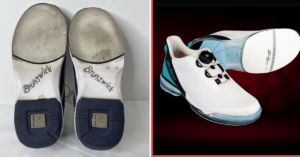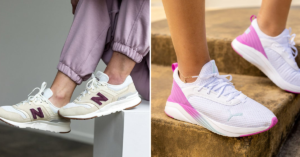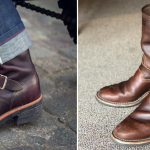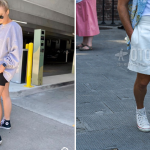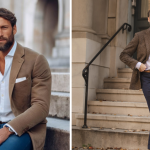Sustainable fashion is all about creating clothes that consider the environment, society, and the well-being of those involved in the production process. It’s about making conscious choices that minimize harm and maximize the good vibes in the fashion world. By opting for sustainable fashion, you are not only looking good but also doing good for the planet and the people on it.
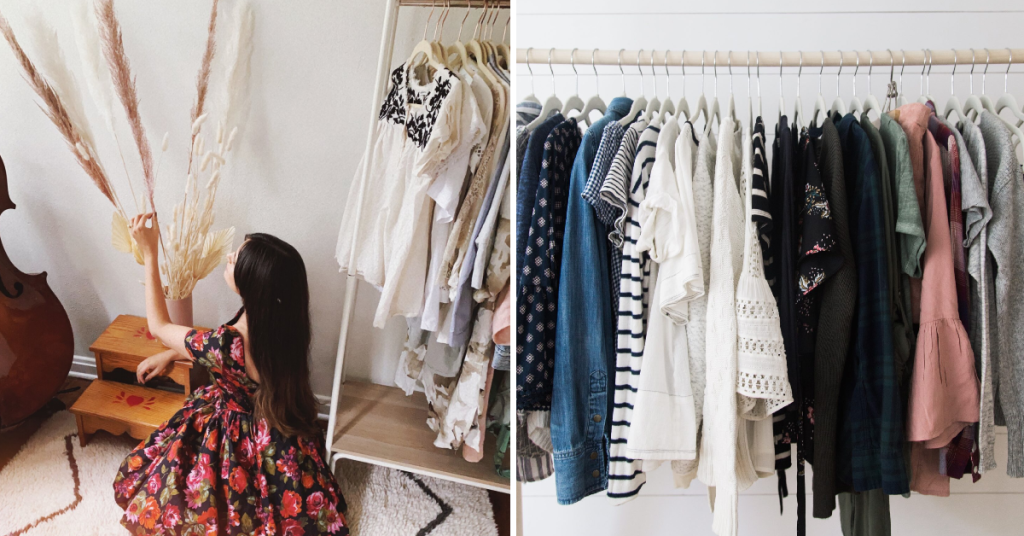
With the rise of fast fashion, the fashion industry has been plagued by issues like pollution, exploitation of labor, and unethical practices. Sustainable fashion aims to combat these problems by promoting transparency, fair wages, and eco-friendly practices. By choosing sustainable fashion, you are voting with your wallet for a better fashion industry that values quality over quantity and respects the world we live in.
Understanding the Impact of Fast Fashion
Fast fashion refers to the rapid production of inexpensive clothing designs that quickly cycle through stores to meet consumer demand. Brands under the fast fashion umbrella churn out new collections at a breakneck pace to keep up with the latest trends. This business model results in a high turnover of garments and encourages consumers to constantly buy new clothing items.
The impact of fast fashion is far-reaching and detrimental to both the environment and the workers in the fashion industry. The quest for cheap, trendy clothes leads to overproduction, which contributes to textile waste pollution and exploitation of labor in developing countries where most garments are produced. Additionally, the poor quality of fast fashion items often results in these clothing pieces being discarded and ending up in landfills, adding to the growing problem of textile waste.
Assessing Your Current Wardrobe
So, you’re curious about taking a closer look at your current wardrobe, huh? Well, let’s dive right in! Start by rummaging through your closet and drawers to see what you’ve got going on in there. Look for pieces that you love and wear frequently, as well as those items that have been collecting dust for far too long.
Next, take note of the colors, styles, and fabrics that dominate your wardrobe. Are you a sucker for neutrals or do you gravitate towards bold, bright hues? Do you have a sea of skinny jeans but not a single dressy outfit in sight? Understanding what you already own can help you figure out what you may need to add or remove to create a more balanced and versatile collection of clothing.
Decluttering and Donating Unwanted Items
As you sift through your wardrobe, rummaging through the racks and drawers, it’s time to face the truth: some items just don’t spark joy anymore. Whether they no longer fit, are out of style, or simply no longer resonate with your personal style, it’s okay to let them go. In fact, decluttering and donating unwanted items can be a liberating experience. It creates physical space in your closet and mental space in your mind. So, grab a couple of bags or boxes and start sorting through your clothes. Be honest with yourself; if you haven’t worn something in over a year, it’s probably time to bid it farewell.
Donating these unwanted items can make a significant impact beyond just freeing up space in your closet. By giving away gently used clothing, you are extending the life cycle of these garments and diverting them from landfills. Consider donating to local shelters, thrift stores, or clothing drives in your community. Your donations can benefit those in need and contribute to a more sustainable fashion cycle. Plus, knowing that your unwanted items may find a new home where they will be cherished and utilized can bring a sense of fulfillment to the decluttering process.
Investing in Timeless and Versatile Pieces
When it comes to building a sustainable wardrobe, investing in timeless and versatile pieces should be at the top of your list. These pieces, such as a classic white button-down shirt, a well-tailored blazer, or a pair of quality denim jeans, can be mixed and matched in countless ways to create different looks for various occasions.
Opting for neutral colors like black, white, navy, or beige can make it easier to coordinate these timeless pieces with the rest of your wardrobe. Look for high-quality materials that are durable and will stand the test of time, ensuring that your investment piece remains a staple in your closet for years to come. Remember, quality over quantity is key when it comes to building a sustainable and stylish wardrobe.
Exploring Secondhand and Vintage Shopping
One treasure trove for unique fashion finds is secondhand and vintage shopping. It’s like going on a stylish treasure hunt where you never know what hidden gems you might uncover! Many thrift stores, consignment shops, and online platforms offer a diverse selection of pre-loved clothing and accessories waiting to be rediscovered. From retro dresses to funky accessories, you can score one-of-a-kind pieces that add character to your wardrobe.
Embracing secondhand and vintage shopping not only adds a personal touch to your style but also contributes to a more sustainable fashion industry. By giving pre-owned items a new life, you’re reducing the demand for new production and helping to minimize the environmental impact of fast fashion. Plus, incorporating vintage pieces into your outfits adds a unique flair and showcases your individuality through fashion storytelling.
Supporting Ethical and Eco-Friendly Brands
When it comes to upgrading your wardrobe, choosing to support ethical and eco-friendly brands can make a significant impact. By opting for brands that prioritize sustainability, you are not only making a conscious choice for the environment but also supporting businesses that strive for ethical practices. These brands often focus on using sustainable materials, reducing waste, and promoting fair labor practices throughout their supply chain.
When shopping for clothing, accessories, or shoes, take the time to research the brands you are interested in and look for certifications or transparent information about their sustainability initiatives. Making informed choices about where you invest your money can help drive the fashion industry towards a more sustainable future. Remember, every purchase you make is a vote for the kind of world you want to support, so why not choose to support brands that align with your values and make a positive impact on the planet and its people?
Learning to Care for Your Clothes Properly
To make your clothes last longer, washing them in cold water is key. Hot water can cause colors to fade and fabrics to shrink, so opt for a cooler temperature setting. Additionally, turning your clothes inside out before washing can help protect the outer design and color.
When it comes to drying your clothes, avoid using the dryer excessively as it can wear out fabrics and contribute to shrinking. Instead, try air-drying your clothes on a drying rack or hanger. This method not only extends the lifespan of your garments but also helps save energy.
Creating a Capsule Wardrobe
When it comes to building a capsule wardrobe, the key is simplicity. Start by selecting a color palette that suits your style and preferences. Neutral tones like black, white, grey, and camel are versatile and can be easily mixed and matched. Consider including a few pops of color or pattern for variety, but make sure they can be paired with multiple items in your wardrobe.
Next, focus on selecting timeless pieces that can be worn in multiple ways. Opt for high-quality basics like a classic white button-down shirt, a well-fitted pair of jeans, and a tailored blazer. These foundational pieces serve as the building blocks of your capsule wardrobe and can be dressed up or down depending on the occasion. Remember, less is more when it comes to creating a functional and stylish capsule collection.
Tips for Maintaining a Sustainable Wardrobe
To keep your sustainable wardrobe in top shape, remember to wash your clothes in cold water whenever possible. This not only helps conserve energy but also prevents colors from fading quickly. Using a gentle detergent free from harsh chemicals can also prolong the lifespan of your garments. In addition, consider air-drying your clothes instead of using a dryer to reduce your carbon footprint further.
Another helpful tip is to mend and repair your clothing items instead of immediately discarding them at the first sign of wear and tear. Learning basic sewing skills can go a long way in extending the life of your favorite pieces. By fixing a loose button or stitching up a small hole, you can avoid contributing to the growing amount of textile waste in landfills.
FAQs about Building a Sustainable Wardrobe
Why does sustainable fashion matter?
Sustainable fashion matters because the fashion industry is one of the biggest contributors to environmental pollution and exploitation of labor. By choosing sustainable options, you can help reduce this impact.
What is fast fashion and why is it harmful?
Fast fashion refers to the quick turnover of cheaply made, trendy clothing. It is harmful because it leads to excessive waste, pollution, and poor working conditions for garment workers.
How can I assess my current wardrobe for sustainability?
To assess your wardrobe, look at the materials, production practices, and frequency of wear of each item. Identify areas where you can make more sustainable choices.
What should I do with unwanted clothing?
Consider donating unwanted clothing to thrift stores or charity organizations. This helps reduce waste and gives your clothes a second life.
How can I care for my clothes properly to make them last longer?
Follow care instructions on clothing labels, wash items in cold water, and air dry when possible. Proper care can extend the life of your clothes.
What is a capsule wardrobe?
A capsule wardrobe is a collection of essential, versatile pieces that can be mixed and matched to create a variety of outfits. It helps reduce the need for excessive shopping and promotes a more sustainable approach to fashion.
Conclusion
Building a sustainable wardrobe is a conscious and rewarding approach to fashion that aligns style with values. By carefully curating your closet with timeless, versatile pieces and exploring secondhand or vintage shopping, you can reduce the impact of fast fashion on the environment and promote ethical labor practices. Supporting eco-friendly brands and learning to care for your clothes properly ensures that your wardrobe not only looks good but also lasts longer, further contributing to a more sustainable lifestyle.
Every small step towards sustainable fashion counts. Whether it’s choosing quality over quantity, donating unwanted items, or investing in ethically produced clothing, your choices help shape a more responsible fashion industry. As more people embrace sustainable practices, the collective impact can lead to significant positive changes, making fashion a force for good in the world.

